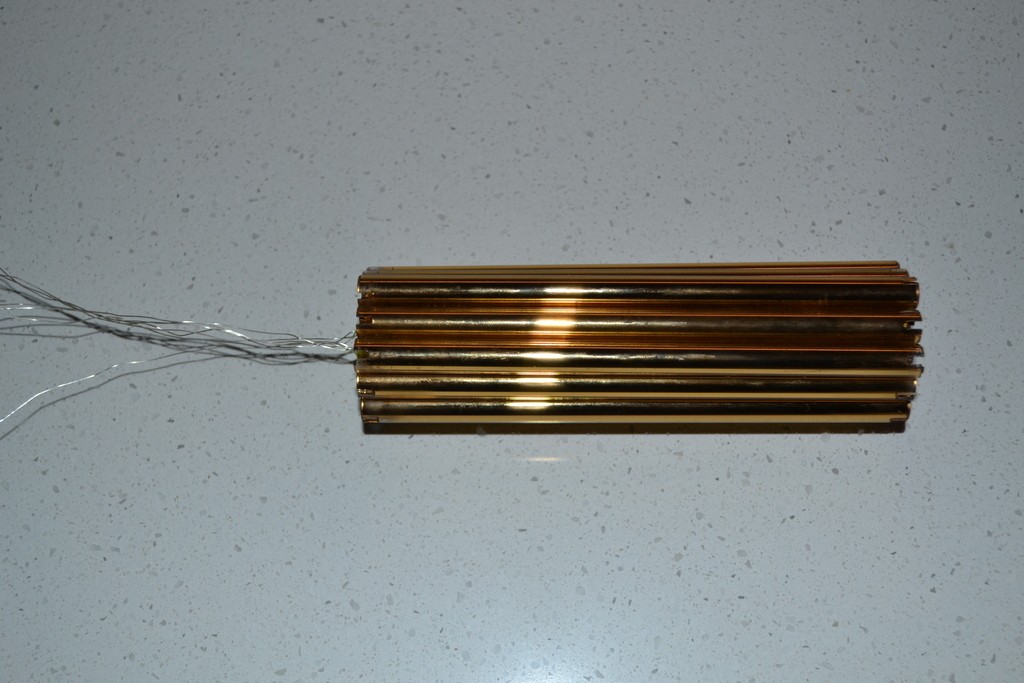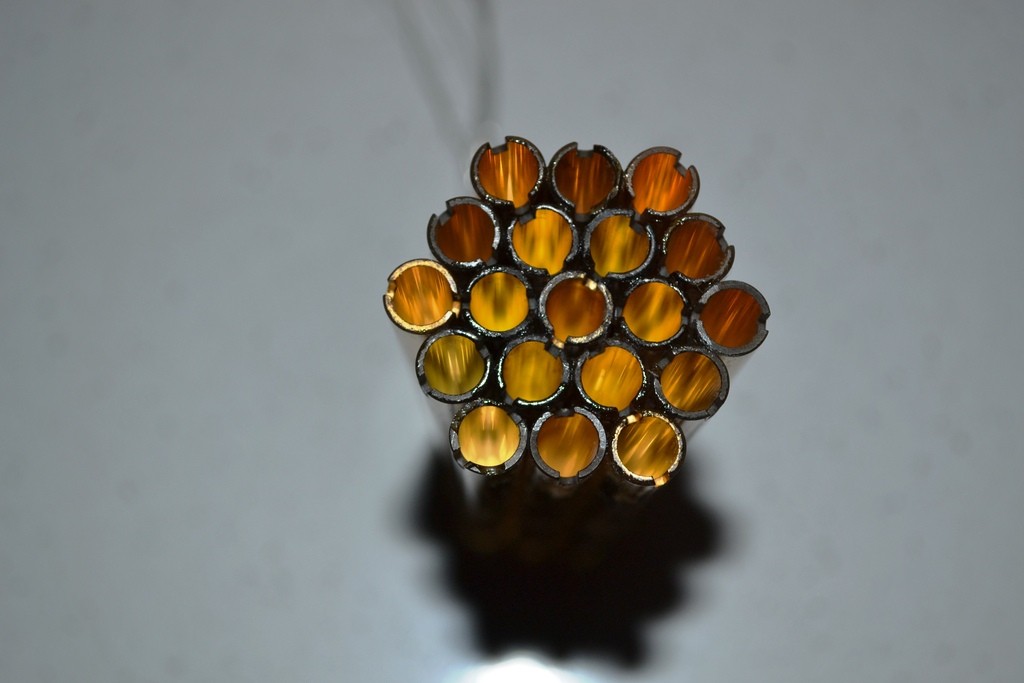Eric has mentioned that the element gold (Au) has the unique property of having direct contact with the Aether, (Counterspace)? This due to the fact that gold is an inert substance, forms no oxide layer, film or barrier and is also an excellent conductor.
Acquired glom from work are quartz tubes with gold plating on the internal surface. These used gold tubes are no longer fit for purpose due to the gold wearing off, or thinning out from the very ends which ruins them optically.

As the tubes are quartz and the gold is on the inside, they can be brought together to form a capacitive structure. One end of each gold tube has a silvered wire connected to the gold via compression to form a good contact.
The combined gold tubes have a total surface area of about 627cm2, or if rolled out flat could form 25cm x 25cm sheet approximately. The isotropic capacity of this configuration is still being determined and measured.

The array of gold tubes consists of 19 tubes, configured in a “flower of life” formation.
This structure is to be used as a terminal capacity for my Tesla Transformer.
Leave a comment: